-
 Bitcoin
Bitcoin $106,731.2224
-1.05% -
 Ethereum
Ethereum $2,444.9804
-1.20% -
 Tether USDt
Tether USDt $1.0003
0.01% -
 XRP
XRP $2.1882
0.09% -
 BNB
BNB $651.1435
-0.61% -
 Solana
Solana $148.3252
-2.09% -
 USDC
USDC $1.0000
0.01% -
 TRON
TRON $0.2787
0.55% -
 Dogecoin
Dogecoin $0.1598
-3.16% -
 Cardano
Cardano $0.5520
-2.43% -
 Hyperliquid
Hyperliquid $39.0960
-2.64% -
 Bitcoin Cash
Bitcoin Cash $516.9519
2.98% -
 Sui
Sui $2.7011
-2.95% -
 Chainlink
Chainlink $13.0582
-1.71% -
 UNUS SED LEO
UNUS SED LEO $8.9250
-2.53% -
 Stellar
Stellar $0.2359
-0.18% -
 Avalanche
Avalanche $17.3856
-3.73% -
 Toncoin
Toncoin $2.8095
-3.56% -
 Shiba Inu
Shiba Inu $0.0...01121
-1.95% -
 Litecoin
Litecoin $85.2795
-0.85% -
 Hedera
Hedera $0.1471
-2.15% -
 Monero
Monero $319.8004
1.12% -
 Dai
Dai $1.0001
0.01% -
 Ethena USDe
Ethena USDe $1.0001
0.02% -
 Bitget Token
Bitget Token $4.5344
-1.07% -
 Polkadot
Polkadot $3.3224
-2.96% -
 Uniswap
Uniswap $6.9697
-2.75% -
 Aave
Aave $266.1658
-2.25% -
 Pepe
Pepe $0.0...09414
-3.41% -
 Pi
Pi $0.4913
-3.29%
How to change the default network of Phantom Wallet?
Changing the default network in Phantom Wallet is easy and useful for managing assets across Solana, Ethereum, and Polygon networks.
Apr 06, 2025 at 01:21 pm
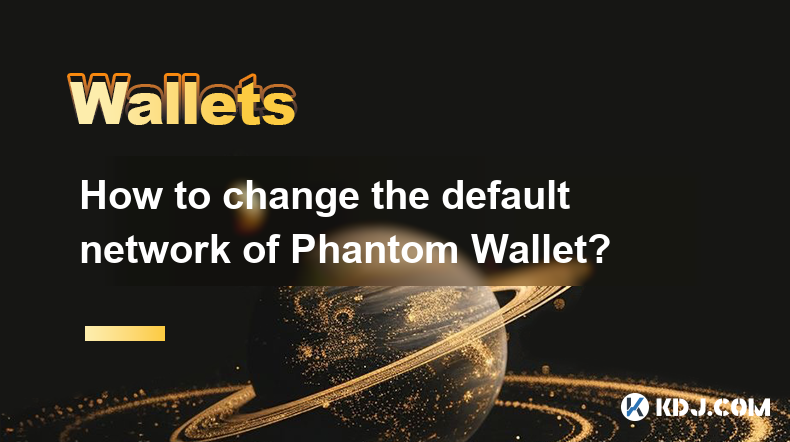
Changing the default network of Phantom Wallet is a straightforward process that can be useful for users who frequently switch between different blockchain networks. Phantom Wallet, primarily used for Solana-based cryptocurrencies, also supports other networks like Ethereum and Polygon. By changing the default network, users can streamline their experience and ensure they are interacting with the correct blockchain for their transactions. This guide will walk you through the steps to change the default network in Phantom Wallet, ensuring you can easily manage your digital assets across different ecosystems.
Understanding Phantom Wallet and Its Networks
Phantom Wallet is a popular non-custodial wallet designed for the Solana blockchain, but it also supports other networks such as Ethereum and Polygon. Each network has its own set of tokens and decentralized applications (dApps). The default network in Phantom Wallet is set to Solana, but users can switch to other supported networks based on their needs. Understanding the different networks and their functionalities can help users make informed decisions when managing their cryptocurrencies.
Why Change the Default Network?
There are several reasons why a user might want to change the default network in Phantom Wallet. For instance, if you are primarily dealing with Ethereum-based tokens or dApps, setting Ethereum as your default network can save time and reduce the risk of errors. Similarly, if you are involved in projects on the Polygon network, switching to Polygon as your default can enhance your user experience. Changing the default network ensures that you are always ready to interact with the blockchain that is most relevant to your current activities.
Steps to Change the Default Network in Phantom Wallet
To change the default network in Phantom Wallet, follow these steps:
- Open Phantom Wallet: Launch the Phantom Wallet application on your device.
- Access Settings: Click on the settings icon, usually located in the top right corner of the wallet interface.
- Select Network: Scroll down to the "Network" section and click on it.
- Choose Your Network: You will see a list of supported networks such as Solana, Ethereum, and Polygon. Select the network you want to set as your default.
- Confirm the Change: After selecting your preferred network, confirm the change. The wallet will now default to the selected network upon opening.
Verifying the Network Change
After changing the default network, it's important to verify that the change has been applied correctly. To do this:
- Check the Network Indicator: Look at the top of the Phantom Wallet interface. There should be an indicator showing the current network.
- Test a Transaction: Try sending a small amount of cryptocurrency to another address on the new network to ensure everything is functioning as expected.
- Review Connected dApps: If you have dApps connected to your wallet, ensure they are compatible with the new network and functioning correctly.
Troubleshooting Common Issues
Sometimes, users may encounter issues when changing the default network. Here are some common problems and their solutions:
- Network Not Appearing: If a network you expect to see is not listed, ensure your Phantom Wallet is updated to the latest version. Sometimes, new networks are added in updates.
- Transaction Failures: If transactions fail after changing the network, double-check that you have the correct network selected and that you have sufficient funds for the transaction fees on the new network.
- dApp Compatibility: Some dApps may not be compatible with all networks. If a dApp stops working after changing the network, try switching back to the original network or check if the dApp supports the new network.
Best Practices for Managing Multiple Networks
Managing multiple networks in Phantom Wallet can be streamlined with these best practices:
- Regularly Update Your Wallet: Keep your Phantom Wallet updated to ensure you have access to the latest networks and features.
- Use Network-Specific Wallets: If you frequently switch between networks, consider using separate wallets for each network to avoid confusion.
- Monitor Network Fees: Different networks have different fee structures. Always check the current fee rates before making transactions to avoid surprises.
- Backup Your Wallet: Regularly backup your wallet to ensure you can recover your funds if something goes wrong during a network switch.
Security Considerations When Changing Networks
Changing the default network in Phantom Wallet can have security implications. Here are some considerations to keep in mind:
- Phishing Risks: Always ensure you are using the official Phantom Wallet application. Phishing sites may try to trick you into entering your seed phrase or private keys.
- Network-Specific Scams: Be aware that different networks may have different types of scams. Research common scams on the network you are switching to.
- Double-Check Transactions: After changing networks, double-check the recipient address and transaction details to ensure you are sending funds to the correct place on the correct network.
Advanced Features and Network Switching
Phantom Wallet offers advanced features that can enhance your experience when switching between networks. These include:
- Multi-Chain Support: Phantom Wallet's ability to support multiple chains allows users to manage a diverse portfolio of cryptocurrencies from a single interface.
- Cross-Chain Swaps: Some versions of Phantom Wallet support cross-chain swaps, allowing users to exchange tokens between different networks directly within the wallet.
- Network-Specific dApp Integration: Phantom Wallet integrates with dApps specific to each network, providing a seamless experience when switching between different blockchain ecosystems.
User Experience and Network Switching
The user experience when switching networks in Phantom Wallet is designed to be intuitive and user-friendly. Here are some aspects that contribute to a positive user experience:
- Clear Interface: The interface clearly indicates the current network, making it easy for users to know which network they are on.
- Quick Switching: The process of switching networks is quick and straightforward, minimizing downtime and confusion.
- Helpful Tooltips: Phantom Wallet often includes tooltips and help sections that guide users through the process of changing networks and understanding the implications.
Network-Specific Features and Benefits
Each network supported by Phantom Wallet has its own unique features and benefits. Understanding these can help you make the most of your wallet:
- Solana: Known for its high throughput and low transaction fees, Solana is ideal for users who need fast and cost-effective transactions.
- Ethereum: As the most widely used smart contract platform, Ethereum offers a vast ecosystem of dApps and tokens, making it essential for users involved in DeFi and NFTs.
- Polygon: Polygon provides a scalable solution for Ethereum, offering lower fees and faster transactions, making it a popular choice for users looking to optimize their Ethereum-based activities.
Common Questions About Changing the Default Network in Phantom Wallet
Q: Can I switch back to the original network after changing the default network in Phantom Wallet?
A: Yes, you can switch back to the original network at any time by following the same steps used to change the default network. Simply go to the settings, select the network section, and choose the network you want to switch to.
Q: Will changing the default network affect my existing tokens and transactions?
A: Changing the default network will not affect your existing tokens or transactions. However, you need to ensure you are on the correct network when sending or receiving tokens to avoid errors.
Q: Is it safe to change the default network in Phantom Wallet?
A: Yes, it is safe to change the default network in Phantom Wallet as long as you follow the official guidelines and use the legitimate application. Always double-check the network before making transactions to ensure you are on the correct one.
Q: Can I use the same Phantom Wallet address across different networks?
A: No, each network has its own unique address format. You will need to use the correct address for each network when sending or receiving tokens.
Q: What should I do if I encounter issues after changing the default network?
A: If you encounter issues, first ensure your wallet is updated to the latest version. Check the network indicator to confirm you are on the correct network, and try a small test transaction. If problems persist, consider reaching out to Phantom Wallet support for assistance.
Disclaimer:info@kdj.com
The information provided is not trading advice. kdj.com does not assume any responsibility for any investments made based on the information provided in this article. Cryptocurrencies are highly volatile and it is highly recommended that you invest with caution after thorough research!
If you believe that the content used on this website infringes your copyright, please contact us immediately (info@kdj.com) and we will delete it promptly.
- Powell, Stablecoin Regulation, and Circle's Bold Move: A New York Minute on Crypto's Future
- 2025-07-02 02:30:12
- Ethereum Price, Tom Lee, and Bitcoin: A New Era for Crypto?
- 2025-07-02 02:30:12
- Hoskinson, Ripple, Cardano DeFi: A New Era of Collaboration?
- 2025-07-02 02:35:12
- BlockDAG, ALGO, and the Crypto Trends Shaping 2025
- 2025-07-02 01:50:12
- Cold Wallet, Token, Gains: Is CWT the Smartest Crypto Move?
- 2025-07-02 01:10:12
- Pi Coin's Rocky Ride: Support Levels, Recovery Timeline, and What the Experts Are Saying
- 2025-07-02 01:10:12
Related knowledge
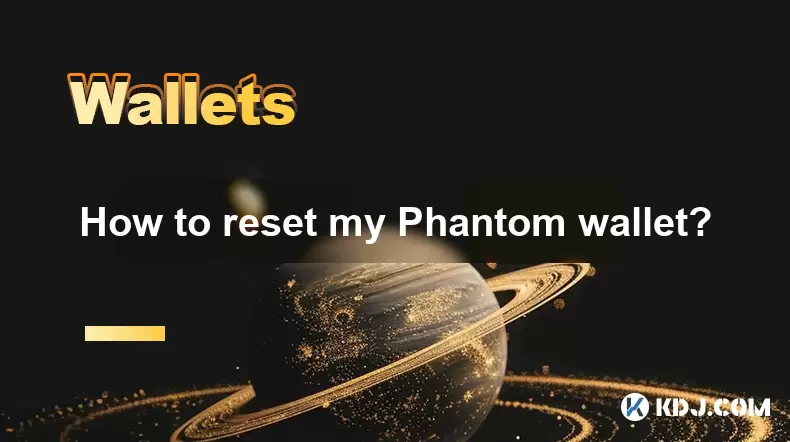
How to reset my Phantom wallet?
Jul 02,2025 at 12:36am
Understanding the Need for Resetting Your Phantom WalletIf you're using a Phantom wallet, you may encounter situations where resetting your wallet becomes necessary. This could be due to forgotten passwords, seed phrase issues, or account corruption. Phantom is a non-custodial wallet primarily used for interacting with the Solana blockchain, and it stor...
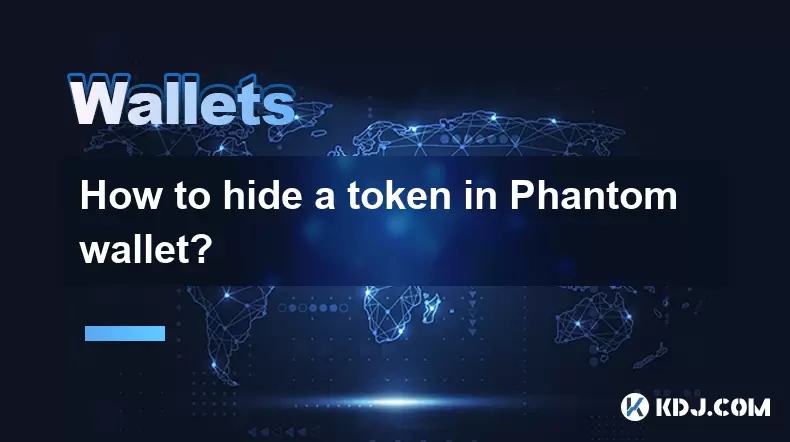
How to hide a token in Phantom wallet?
Jul 01,2025 at 05:49pm
Understanding the Phantom Wallet InterfacePhantom wallet is a popular non-custodial wallet used primarily for interacting with the Solana blockchain. It allows users to store, send, receive, and manage various tokens, including both fungible and non-fungible tokens (NFTs). Before attempting to hide a token, it's essential to understand how the wallet in...
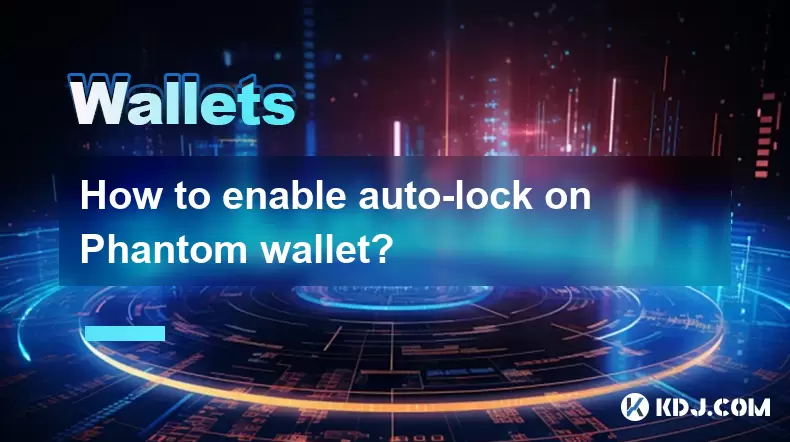
How to enable auto-lock on Phantom wallet?
Jul 01,2025 at 04:01pm
What is Auto-Lock in Phantom Wallet?Phantom wallet is a popular non-custodial cryptocurrency wallet used primarily for interacting with the Solana blockchain. One of its security features includes the ability to set an auto-lock timer, which ensures that the wallet locks itself automatically after a period of inactivity. Auto-lock enhances security by p...
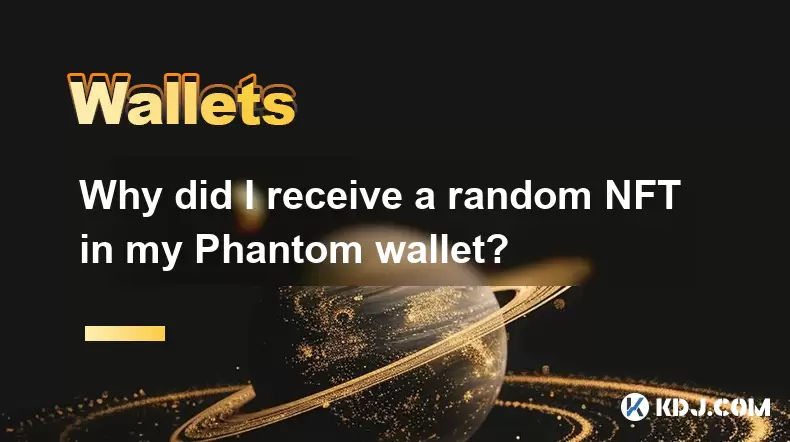
Why did I receive a random NFT in my Phantom wallet?
Jul 01,2025 at 09:00pm
Receiving an Unexpected NFT in Your Phantom WalletIf you've recently opened your Phantom wallet and noticed an unfamiliar NFT appearing in your collection, you're not alone. Many users have reported receiving random or unsolicited non-fungible tokens, often without any prior interaction with the project or sender. This phenomenon has become increasingly...
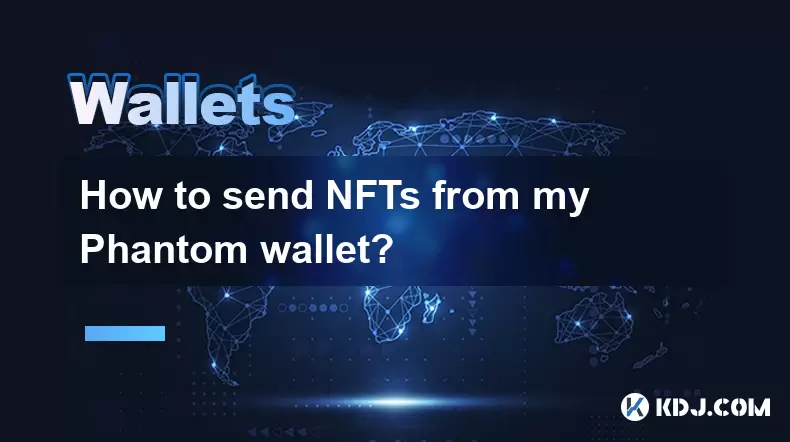
How to send NFTs from my Phantom wallet?
Jul 02,2025 at 03:15am
What is Phantom Wallet and Why Use It for NFT Transfers?Phantom wallet is a non-custodial cryptocurrency wallet primarily used for interacting with the Solana blockchain. It supports both tokens and NFTs, making it a popular choice among users who engage in decentralized finance (DeFi) or digital collectibles. The interface is user-friendly, allowing ev...
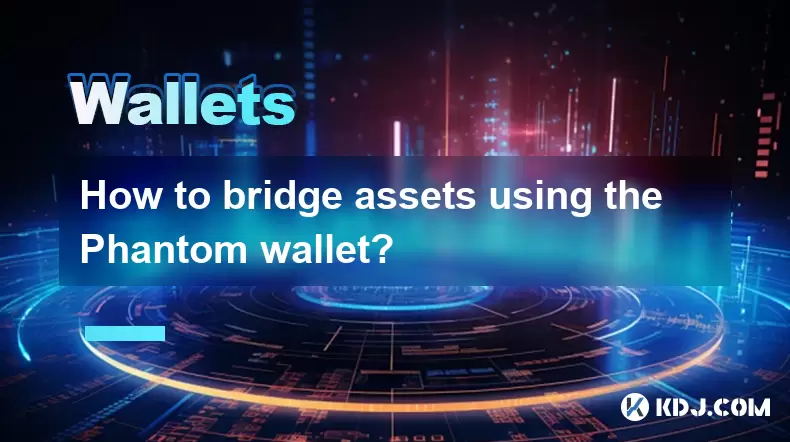
How to bridge assets using the Phantom wallet?
Jul 02,2025 at 02:50am
Understanding the Basics of Asset BridgingAsset bridging refers to the process of transferring digital assets from one blockchain network to another. This functionality is crucial in a multi-chain ecosystem where users may need to move tokens between different networks for various purposes, such as accessing decentralized applications (dApps), participa...

How to reset my Phantom wallet?
Jul 02,2025 at 12:36am
Understanding the Need for Resetting Your Phantom WalletIf you're using a Phantom wallet, you may encounter situations where resetting your wallet becomes necessary. This could be due to forgotten passwords, seed phrase issues, or account corruption. Phantom is a non-custodial wallet primarily used for interacting with the Solana blockchain, and it stor...

How to hide a token in Phantom wallet?
Jul 01,2025 at 05:49pm
Understanding the Phantom Wallet InterfacePhantom wallet is a popular non-custodial wallet used primarily for interacting with the Solana blockchain. It allows users to store, send, receive, and manage various tokens, including both fungible and non-fungible tokens (NFTs). Before attempting to hide a token, it's essential to understand how the wallet in...

How to enable auto-lock on Phantom wallet?
Jul 01,2025 at 04:01pm
What is Auto-Lock in Phantom Wallet?Phantom wallet is a popular non-custodial cryptocurrency wallet used primarily for interacting with the Solana blockchain. One of its security features includes the ability to set an auto-lock timer, which ensures that the wallet locks itself automatically after a period of inactivity. Auto-lock enhances security by p...

Why did I receive a random NFT in my Phantom wallet?
Jul 01,2025 at 09:00pm
Receiving an Unexpected NFT in Your Phantom WalletIf you've recently opened your Phantom wallet and noticed an unfamiliar NFT appearing in your collection, you're not alone. Many users have reported receiving random or unsolicited non-fungible tokens, often without any prior interaction with the project or sender. This phenomenon has become increasingly...

How to send NFTs from my Phantom wallet?
Jul 02,2025 at 03:15am
What is Phantom Wallet and Why Use It for NFT Transfers?Phantom wallet is a non-custodial cryptocurrency wallet primarily used for interacting with the Solana blockchain. It supports both tokens and NFTs, making it a popular choice among users who engage in decentralized finance (DeFi) or digital collectibles. The interface is user-friendly, allowing ev...

How to bridge assets using the Phantom wallet?
Jul 02,2025 at 02:50am
Understanding the Basics of Asset BridgingAsset bridging refers to the process of transferring digital assets from one blockchain network to another. This functionality is crucial in a multi-chain ecosystem where users may need to move tokens between different networks for various purposes, such as accessing decentralized applications (dApps), participa...
See all articles

























































































